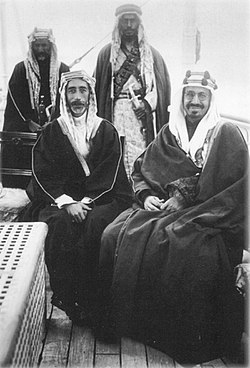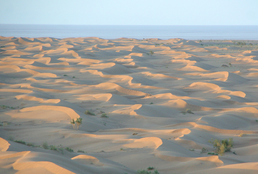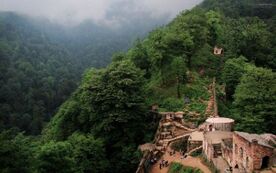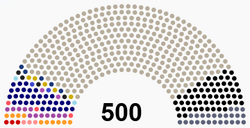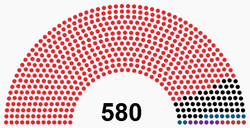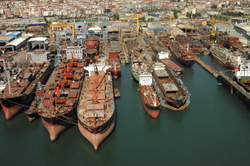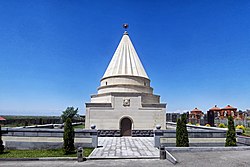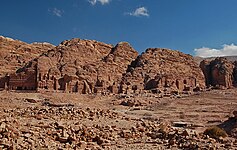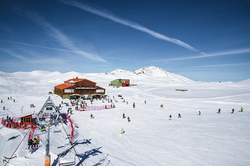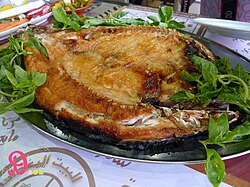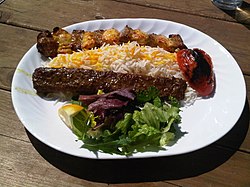Union of Zorasani Irfanic Republics
This article is incomplete because it is pending further input from participants, or it is a work-in-progress by one author. Please comment on this article's talk page to share your input, comments and questions. Note: To contribute to this article, you may need to seek help from the author(s) of this page. |
Union of Zorasani Irfanic Republics اتحاد جماهیرعرفانی زرصانی Ettehād-ye Jamaheer-ye Erfāni-ye Zorasāni الاتحاد الجمهوريات العرفانية الكرصانية al-Ittiḥād al-Jumhūrīyyat al-Irfānīyyah al-Kurṣāniyyah | |
|---|---|
| Motto: استقلال، آزادی، جمهوری اسلامی Esteqlāl, Āzādi, Ettehād اسْتِقْلال، حُرّيّة، اتِّحادة Istiqlāl, Ḥurriyya, Ittiḥād (Independence, Freedom, Union) National ideology: Sattarisim | |
Anthem:
| |
Great Seal | |
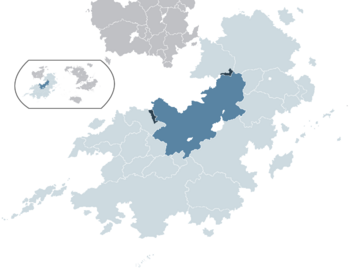 Zorasan in blue, Coius in light blue and claimed territories in dark blue | |
| Capital and largest city | Zahedan, UTC |
| Official languages | Badawiyan Pardarian |
| Recognised regional languages | Kexri Syriati Yanogu |
| Ethnic groups | See Ethnicity |
| Religion | State religion: Irfan (Arta and Hasawi) Constitutionally recognised minority religions: Maronite Catholicism, Atuditism, Zoroastrianism, Druze |
| Demonym(s) | Zorasani |
| Government | De jure: Federal Sattarist parliamentary republic De facto: Federal Sattarist dominant party parliamentary republic |
| Vahid Isfandiar | |
| Farzad Akbari | |
| Ibrahim Al-Fahim | |
| Legislature | Supreme Assembly |
| Superior Council | |
| Popular Council | |
| Establishment | |
| 31 October 1953 | |
• Constitution adopted | 4 November 1953 |
• Treaty of Unification | 22 May 1956 |
| 1974-1979 | |
| 6 April 1979 | |
• Current constitution | 10 May 1984 |
| Area | |
• Total | 2,098,131 km2 (810,093 sq mi) |
• Water (%) | 1.3% |
| Population | |
• 2018 estimate | 173,112,587 |
• 2012 census | 171,998,206 |
• Density | 179.60/km2 (465.2/sq mi) |
| GDP (PPP) | estimate |
• Total | $2.250 trillion ([[List of countries by GDP (PPP)|13th]]) |
• Per capita | $13,002.59 |
| GDP (nominal) | estimate |
• Total | $1.809 trillion ([[List of countries by GDP (nominal)|9th]]) |
• Per capita | $7,455 |
| Gini | 46.9 high |
| HDI | 0.769 high |
| Currency | Toman (₮) |
| Date format | dd.mm.yyyy |
| Driving side | left |
The Union of Zorasani Irfanic Repulics (Pasdani: اتحاد جماهیرعرفانی زرصانی; Ettehād-ye Jamaheer-ye Erfāni-ye Zorasāni; Arabic: الاتحاد الجمهوريات العرفانية الكرصانية; al-Ittiḥād al-Jumhūrīyyat al-Irfānīyyah al-Kurṣāniyyah), commonly called the Zorasani Union, Zorasan or the UZIR, is a federal non-partisan parliamentary republic located in northern Coius. The UZIR is bordered by Xiaodong and Kumuso to the south, Karzaristan and Kituk to the west, Tsabara to the east and the Solarian Sea to the north and Mazdan Sea to the north-west. The UZIR is home to diverse ethnic groups, with Arta Irfan as the majority and XXX as the largest minority, it also includes XX, Yazidis, XX and a tiny minority of Abburites. Its two largest ethnic groups are Pardarians and Arabs. With a population of 173.1 million it is the Xth largest country in the world and and Xth largest in Coius, it has a total area of 2,098,131 km2 (810,093 sq mi), making it the Xth largest in Coius and the Xth largest in the world.
Zorasan is home to some of the world's oldest civilizations, beginning with the formation of the Asirani and Galdian kingdoms in the fourth millennium BCE. Both the Pardarian and Badawiyan civilisations would be united under the former through the Barzanid Empire. The Sorsanid Empire would establish the tradition of Pardarian rule from the 4th century BCE until the 19th century, often with deep levels of Badawiyan integration. The Arasanid Empire would emerge in the 3rd century CE as a world leading power, with territory stretching from Hydana to southern Bahia. The Arasanid Empire would be in regular conflict with both the Solarian and Verliquioan empires, until the emergence of Irfan in 620 CE and the Tagemes invasion .
The rise of Irfan between 620 and 690 succeeded the devastation of the Tagemes invasions, the fledgling religion overthrew the Arasanid Empire in the Emshab-ye Amorzesh, in which the Shah and his family were killed by rebels under Ardashir Fereydun. The empire was replaced with the First Heavenly Dominion, which rapidly expanded across northern Coius and Bahia in what became known as the Irfanic Conquests. From 690 CE to 1100 CE, much of northern Coius would be ruled under successive Heavenly Dominions sparking the Irfanic Golden Age, until the Fourth Heavenly Dominion transitioned to a monarchy under the Gorsanid dynasty.
For much of its history, the Gorsanid Empire would be a leading world power until it fell technologically and economically behind its Euclean rivals. Successive rebellions and crises would ultimately lead to the Gorsanid collapse and the eventual conquest of its territory by Euclean powers. In 1863, much of modern day Zorasan was colonised by Etruria and was subsequently divided into numerous colonial possessions, though the monarchy survived through the Etrurian-dominated Shahdom of Pardaran. During the first half of the 20th century Zorasan was dominated by numerous rebellions and uprisings against Etrurian rule which coincided with both the Great War (1928-1936) and Solarian War (1943-1946). Independence followed with Zorasan being divided into a series of unstable states along ethnic lines, where ideological extremism dominated politics. In 1949, Pardaran was unified following a short civil war under Mahrdad Ali Sattari, who's pan-Zorasani ideology led to a similar revolution in Khazestan in 1950 and the two nations merger. Over the next twenty years, conflict, terrorism and revolution would ultimately lead to Zorasani unification in wake of the Irvadistan War in 1979. Between 1979 and 1980, the new union reformed into a parliamentary non-partisan federation. Economic reforms led to significant economic growth and rapid development.
The UZIR is a member of the Community of Nations, GIFA, NAC and the ITO and a founding member of the Rongzhuo Strategic Protocol Organisation. It is recognised as a regional to middle power by international commentators; some have claimed that it is a potential superpower in the event of further economic development. The UNIR has the largest proven oil reserves and is the world's largest producer of oil and natural gas, leading it to be considered an energy superpower.
History
Pre-history
The earliest attested archaeological artifacts in Zorasan, like those excavated at Dorshad and Zarashfud, confirm a human presence in both Khazestan and Pardaran since 300,000 BC. Pardaran's Neanderthal artifacts from the Middle Paleolithic have been found mainly in the Miran region. From the 10th to the seventh millennium BC, early agricultural communities began to flourish in and around the Miran region in eastern Pardaran.
Pardarian development ran almost concurrently to the emergence of civilisations in the Asirani valley, in neighboring modern Khazestan. In Khazestan, the early Galdian civilisation became the source of what is debated to be the world's first writing system and recorded history itself were born. The Galdians are also argued to be the first to harness the wheel and create City States, and whose writings record the first evidence of Mathematics, Astronomy, Astrology, Written Law, Medicine and Organised religion. Writing systems also emerged in eastern Pardaran, with similar systems of cuneform to that of the Galdians.
Sorsanid Empire (350 BCE-300 CE)
Arasanid Empire (300-620)
Rise of Irfan (620-690)
Heavenly Dominions (690-1100)
Gorsanid Empire (1100-1700)
Gorsanid collapse (1700-1880)
Colonial Zorasan (1880-1946)
Independence and Civil War (1946-1950)
Following the end of the Solarian War, the Treaty of Ashcombe restored independence to Etruria’s colonial possessions, establishing the independent states of Pardaran, Khazestan, Emirate of Irvadistan, Kexri Republic and the Confederation of Riyhadi Kingdoms. The use of the 1889 Treaty of Verlois to establish the borders, alongside the lack of legitimacy of the new governments resulted in the collapse of authority and government across swathes of Zorasan, and the emergence of warlord cliques, small statelets and two rival governments in Pardaran.
The Shahdom under Ahmad Reza Shah failed to establish control over the internationally recognised borders of Pardaran, owing to the Shahdom’s history as a compliant protectorate of Etruria since 1869. This allowed two military cliques and a nascent democratic republic to emerge in the north-west, while the Xiaodong-backed Pardarian Revolutionary Resistance Command; which had dominated the resistance movement during the Zorasani Rebellion (1936-1946) coalesced in the far-south. Competing ambitions eventually led to a multifaceted civil war that ultimately led to a PRRC victory over its rivals and the establishment of the Free Zorasani Republic in 1950.
In the Badawiyan east of Zorasan, the Kingdoms of Khazestan and Irvadistan stabilised relatively quickly, with King Hussein I of Khazestan and King Said Ali of Irvadistan cooperating in confronting restive Badawiyan tribes in the Al-Hizan region. Both kingdoms restored order and stability within their mandated borders by 1948, although economic crises and the spread of Pro-Sattarist elements in Khazestan would undermine the monarchy until its downfall in 1952. In the east, the Kexri Republic under its left-wing nationalist governnment sought to expand its borders at the expense of Badawiyan, Druze and Yazidi tribes and local communities, culminating in the Kexri War (1946-1959). The various emirates and kingdoms of the Riyadha peninsula were the only states to stabilise immediately upon independence, coalescing into the Confederation of Riyhadi Kingdoms under the pro-Euclean Emir Rafiq Ali. Riyadha became a prominent safe haven for refugees and exiled writers, political thinkers and activists, who fled Pardaran toward the end of the civil war.
By 1950, the states forged by the Treaty of Ashcombe had established themselves, though the instability and anarchy of the four-year period produced a climate of intense revolutionary activity, ideological entrenchment and a deep divided between Pan-Zorasanism and nationalism. This divide would form the basis for the process of Zorasani Unification, as Pardaran and its Sattarist ideology expanded across Zorasan through revolution, coups and war.
Unification of Zorasan (1950-1979)

The situation in Zorasan by 1950, though mostly stabilised politically, was still stricken by extensive war-time devastation, economic collapse, famine and shortages. The civil war in Pardaran saw extensive use of propaganda and radio by the PRRC leader, Mahrdad Ali Sattari who broadcasted daily, messages of republicanism, socialism, pan-Zorasanism and the threat of renewed colonialism. This broadcast were made across Zorasan, which led to the emergence of mass Sattarist movements in the Badawiyan states. The failure by the new states to immediately confront the devastation caused by the Great and Solarian Wars had profound effects on their internal stability.
The PRRC immediately in wake of the civil war regularly vowed to unify Zorasan in order to birth a “renaissance” and to ensure that colonialism would never return to suppress the Zorasani peoples. The PRRC’s conflation of colonial exploitation with monarchism led to further agitation among the starving masses toward their monarchs in Khazestan and Irvadistan. This was defined by the power-struggle in wake of Mahrdad Ali Sattari's death in 1951 and his succession by Omid Sharifirad and then by Ali Sayyad Gharazi. The PRRC’s renewed focus on unification in wake of its victory in the Pardarian Civil War swiftly led conflict with its Badawiyan neighbours.
Between 1950 and 1952, Khazestan was racked by mass bread riots, strikes and the continued effects of its collapsed infrastructure. King Hussein’s reliance on authoritarianism and often excessive violence to maintain control was capitalised by the Sattarist movement in Khazestan and its patron in Pardaran. On July 8 1952, a bread riot in the capital of Faidah escalated into a full-blow revolution, which coincided with a Pardarian military invasion. King Hussein was overthrown and executed, while Khazestan formally merged with Pardaran to form the Union of Khazestan-Pardaran, with Ali Sattari as Supreme Leader. However, the rapid disintegration of the Kingdom outpaced Pardarian armed forces, which resulted in northern Khazestan breaking away and forming the independent Emirate of Khazestan. The immediate deployment of armed units from the Emirate of Irvadistan, deterred a Pardarian advance, leading to the formal division of Khazestan for the next decade.
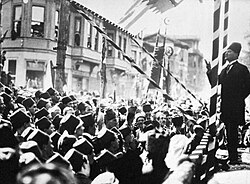
A cold war rapidly developed between the Union of Khazestan-Pardaran and the independent Badawiyan states to the north. In the east, the left-wing Kexri Republic struggled to confront resistance from its Badawiyan, Druze and Yazidi minorities, while it deferred from taking sides, it would eventually become a major theatre in the cold war. During the late 1950s, the region recoiled under the costs of terrorism, political agitation and economic mismanagement. The Badawiyan states were faced with growing ideological extremes competing for control, while also threatening the ruling elites. The Emirate of Irvadistan, primarily focused on combatting Sattarism, failed to confront the socialist movement, which grew significantly from economic failures, inequality and weaknesses of the monarchy.
In 1962, a coalition of Badawiyan, Druze and Yazidi rebel groups united to form the Revolutionary Resistance Command of Ninevah (RRCN). Aided by the UKP, it escalated its guerrilla war, while the UKP invaded the Kexri Republic in May 1962. An RRCN offensive on the Kexri capital of Surayda Hemko decapitated the Kexri government and the republic swiftly collapsed. A widely regarded rigged referendum six months later saw the former Kexri Republic merged into the UKP as the Region of Ninevah. This victory for the UKP greatly upset the balance of power and directly led to the Badawiyan War in 1963. During the three-year conflict, the UKP would defeat the allied forces of Irvadistan, North Khazestan and the Riyhadi Confederation, and would see the reunification of Khazestan within the UKP.
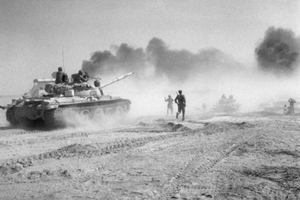
The late 1960s and early 1970s would see repeated waves of terrorism, political instability, failed coups and agitation by both sides. The prior instability in Irvadistan coupled with the casualties and defeat in the Badawiyan War led to the overthrow of the Emirate by the Irvadi Section of the Worker’s Internationale (ISWI) in 1968. The coup saw the collapse of the unified Badawiyan opposition to the UKP, ultimately leading to the 1974 overthrow of the Riyhadi Confederation by the Revolutionary Resistance Command of Riyadha, this was followed by the admission of the Riyadha peninsula into the UKP, leaving Irvadistan as the sole remaining independent state.
Rising tensions coinciding with disputes over the Haradh oil field, led to the surprise Irvadi invasion of Khazestan in the Summer of 1975. The Irvadistan War, would devastate much of northern Zorasan and leave over a million dead. By 1978, facing chronic manpower shortages, collapsing industry and an advancing Khazi-Pardarian opponent, the Irvadi government collapsed. In 1979, the UKP captured the Irvadi capital of Qufeira and established the Provisional Revolutionary Government of Irvadistan. The PRGI worked tirelessly to prepare for the country’s admission into the UKP, while also confronting resistance and economic collapse. Despite the opposition, Irvadistan was admitted on January 11 1980, with the UKP becoming the Union of Zorasani Irfanic Republics, this marked the end of Zorasani unification and its completion.
Union of Zorasani Irfanic Republics (1980-present)
Following the forming of the UZIR in 1980, the new Zorasani government faced considerable pressures for reform to consolidate unification. Many senior figures around Supreme Leader Javad Jahandar were concerned that the single-party state would perpetuate resistance and rebellion in Irvadistan and in other parts of the war-exhausted state. Jahandar opposed immediate reform, but ultimately agreed for considerable structural and constitutional change.
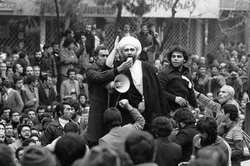
In 1981, Jahandar authorised the sitting of a Constituent Assembly to develop a new inclusive system, which would be introduced after a fixed period of continued single-party rule. By the start of 1982, the Assembly had produced the framework for a federal non-partisan parliamentary republic, which would provide universal suffrage, a commitment to human and civil rights and equally distribute powers to Union Republics to be forged out of the former states. The proposal was put to the Zorasani people by referendum on August 19 1982 and was backed by 88% of the electorate, the first democratic exercise in forty-years within Zorasan. The new constitution and government would be established in wake of a general election in 1985.
During this time and until the 1985 election, the single-party government under Javad Jahandar focused on reconstruction and the economic revitalisation of the northern regions. The merge of the Irvadi and UKP oil companies secured the new nation as the world’s largest oil producer and the possessor of the largest proven oil reserves. Aided by high prices, the government funded rapid reconstruction and modernisation, while also using its capital reserves to fund industrialisation and diversification. Despite the rate of reconstruction and economic growth, Irvadistan would see two unsuccessful revolts against the new government, with the Al-Thawra Uprising (1983-1984) and the Assan Uprising (1985). These failures saw the decline of Irvadi nationalism and resistance, further repressed by a mass embrace of the new semi-democratic system.
In 1985, Zorasan elected members to its local, state and federal level legislatures, marking the adoption of the 1981 constitution and the establishment of the non-partisan parliamentary system. The first parliament was stacked with Sattarist ideologues and figures from the now defunct Revolutionary Masses Party and the Zorasani Revolutionary Unification Front. Javad Jahandar was elected State President by the upper-house, while Hardan al-Bakr became First Minister following his election by the lower-house. Between 1985 and 1990, the Jahandar-Bakr administration continued its focus on reconstruction and economic reform, with the privatisation of state-owned enterprises, the opening of the economy to foreign investment and the formal replacement of the command-economy with state-capitalism as the national economic model.
Economic growth averaged 10% annually during this period, while social reforms expanded education to every child, hundreds of schools and colleges were opened, new universities were opened to women and special scholarships were provided for war orphans. Healthcare also saw significant improvements, with new modern hospitals replacing antiquated or destroyed facilities in Irvadistan. Infant-mortality declined dramatically, and life expectancy rose from 64 on average to 69 by 1990. Mass inoculations eradicated many diseases that plagued pre-war Irvadistan. The same period saw living standards and wages rise nationally by a marked degree, an expansion in foreign trade and investment further improved infrastructure and non-petrochemical sectors of the economy. In 1990, Jahandar and Bakr stood down following that year’s election.
X and X led the nation in the 1990s, sparking what is known as the Saffron Period. Under their administration, Zorasan’s economic performance pulled an estimated 70 million peasants out of poverty and sustained an average annual gross domestic product growth rate of 10.5%. The administration also initiated political reforms that greatly expanded democratisation and weakened the role of the military and clergy. The country joined the International Trade Organisation in 1999 and maintained its high rate of economic growth under X and X leadership in the 2000s. However, their political reforms sparked controversy and opposition and the 2005 global recession resulted in their defeat in the year’s election. Economic growth would rebound and remain strong under X and X who governed from 2005 to 2015.
From 2005 onward, democratisation was rolled back under the Hamid Alizadeh-Abdel Abbas government who rebuilt the military and clergy’s power and influence. Considerable resources were allocated for military expansion and modernisation, while repression of minorities was resumed. A renewed crackdown on minority interest groups led directly to the Kexri Conflict between 2006 and 2009, which saw an estimated 15,000 people killed and thousands more disappeared. The conflict fostered increased military control over the federal government and further backsliding of civil liberties and democracy. The Alizadeh-Abbas government oversaw the introduction of high-speed rail, the largest expansion of road and rail in Zorasani history and further diversification with state-backed manufacturers, technology companies and a liberalisation of the financial services.
In 2015, the Vahid Isfandiar-Farzad Akbari government was elected by the Supreme Assembly of the Union. The new administration focused initially on economic reform, modernisation of social services and infrastructure. The 2015-2020 period was marked by repeated ecological crises, such as repeated droughts and man-made water shortages, labour disputes and a failed return of Kexri insurgency. In 2019, in wake of growing instability within northern Coius and escalating tensions abroad, the Isfandiar-Akbari government oversaw the creation and rise to power of the True Way, a political alliance of numerous hardline Neo-Sattarist groups. True Way’s overwhelming landslide in the 2019 election saw the de-facto demise of the 1981 constitution and the establishment of a dominant-party state.
Geography
The land area of Zorasan is XX square miles (XX km2). Pardaran is the largest state at XXXX square miles (XXXX km2). Aramand, is the smallest at is XXXXX square miles (XXX km2) in area. In Irvadistan the Ruqqad Highlands; which is home to Irvadistan's highest point, Mount Hajar Asud (2,814 m; 9,232 ft), divide the western coastal plain from the al-Ramal al-Wusta Desert, while directly south, the Khazi coast is divided from the Dasht-e-Aftab by the Yafā'Aswad highlands. The Dasht-e-Aftab covers roughly 36% of the Khazi-Pardarian central region. The Tinnin Plateau divides the Aftab from the northern Pardarian coastline, these mountains also aided the creation of the Aftab, by blocking oceaniac rain-clouds from heading southward. The Pasdani south is one of the world's most mountainous regions, its landscape dominated by rugged mountain ranges that separate various basins or plateaux from one another. The south-west is dominated by the Exri and Soban; the last contains Zorasan's highest point, Mount Fereydun at 5,610 m (18,406 ft). To the south of the north-west and the Aftab are highlands that protect the southern plains from the desert and arid north. The southern Pasdani region varies between open flat plains to rolling yet fertile hills and valleys.
Irvadistan's interior is arid desert, but is punctuated by two fertile zones, from the north to south runs the Khabur and from the north to the east runs the Khanzir, these two rivers are vital for the country's agricultural regions and are the primary locations of the population. Both stripes of fertile ground are flanked by arid desert.
The UZIR, with its large size and geographic variety, includes most climate types. Having 11 climates out of the world's 13, Zorasan's climate is diverse, ranging from arid or semiarid, to subtropical along the Pardarian coast and the southern forests. On the southern edge of the country, on the shores of Lake Sharezan (the Sharezan Plain) temperatures rarely fall below freezing and the area remains humid for the rest of the year. Summer temperatures rarely exceed 29 °C (84.2 °F). Annual precipitation is 680 mm (26.8 in) in the eastern part of the plain and more than 1,700 mm (66.9 in) in the western part. Water Scarcity is considered to be the biggest threat to Pardaran, Khazestan and Ninejah and Zorasan at large.
To the west, settlements in the Soban basin experience lower temperatures, severe winters with below zero average daily temperatures and heavy snowfall. The eastern and central basins are arid, with less than 200 mm (7.9 in) of rain, and have occasional deserts. Average summer temperatures rarely exceed 38 °C (100.4 °F). The coastal plains of Irvadistan in south-western Pardaran have mild winters, and very humid and hot summers. The annual precipitation ranges from 135 to 355 mm (5.3 to 14.0 in).
Government and politics
Zorasan is a federal, Sattarist, parliamentary republic. Zorasan’s political system operates under a framework laid out in the 1983 constitution known as the Treaty of Ascension (Ertegha-Peyman). Amendments generally require a two-thirds majority of both the Popular Council and the Superior Council; the fundamental principles of the constitution, as expressed in the articles guaranteeing human dignity, the role of Irfan, the federal structure, and the rule of law are valid in perpetuity.
The Rayis Jomhur-katee (state president), Vahid Isfandiar (19 March 2015–present), is the head of state and invested primarily with representative responsibilities and powers. He is elected by the Superior Council as one of two candidates presented by the Popular Council. The second-highest official in the Zorasani order of precedence is the Avval A’Zam (First Minister), the head of government, who is appointed by the Rayis-Jomhur-katee after being elected by the Popular Council. The third-highest ranking official is the Rayisol-Vozara (President of the Council), who is elected by the Popular Council and responsible for overseeing the daily sessions of the body.
The First Minister, Farzad Akbari (19 March 2015–present), is the head of government and exercises executive power through their State Council, similar to the role of a Prime Minister in other parliamentary democracies. Federal legislative power is vested in the parliament consisting of the Majlis-Mee (Popular Council) and Majlis-Ala (Superior Council) , which together form the legislative body. The Majlis-Mee is elected through direct elections, by first-past-the-post. The members of the Majlis-Ala are divided between those who represent the governments of seven federated states, elected through direct elections by first-past-the-post and those (two-thirds majority), who are appointed by the military.
Since late 2019, the non-partisan structure was dismantled and a general election saw the emergence of near-total domination by the True Way. The True Way party with its extensive presence in business, the clergy and military has led many commentators to describe Zorasan as either a dominant-party state or a de-facto single-party state.
Government
Zorasan's three branches of government are poorly defined by the Constitution. The State President, who appoints the First Minister, is elected by the Superior Council. The First Minister is appointed by the State President after receiving the confidence of the Popular Council through his leadership of the largest grouping (since 2019, as leader of True Way). The head of the Supreme Judicial Council is appointed by the Popular Council with the backing of the Joint Commission for Political Stability.
The relationship between the State President and the First Minister is often disputed. According to convention the State President plays a mostly ceremonial role outside of appointing the First Minister, coordinating between the federal and state governments and representing the Union in diplomatic affairs. The State President is elected in an direct election by the Superior Council. Meanwhile the First Minister officially acts as the head of government appointing and leading the executive (the State Council of Ministers) which heads several government departments. Whilst the First Minister is appointed by the State President, they must commanded the confidence of the Popular Council. Whilst the Constitution implies that the First Ministers' power outstrips that of the State President, a capable State President with greater influence over individual parliamentarians may allow the State President to exercise power and influence over the First Minister. Since 1998, the State President has been allowed to sit on cabinet meetings and request roles and duties outside of the constitution from the First Minister.
The government is also believed to be beholden to the military and clergy, due to the two cabinet-level positions of First and Second State Councillor, with one of each going to the military and clergy. The State Councillors are appointed by the Joint Commission for Political Stability and act as mediators and overseers for the JCPS and government. The military is also guaranteed three positions within the cabinet, Minister of National Defence, Minister of National Security and the Minister of Media and Information. Unlike other states, the Head of State is commander-in-chief of the armed forces, rather the Supreme Commander of the Irfanic Revolutionary Army as chief-of-staff holds the position of commander-in-chief. The military is known to hold an informal veto at the executive level, while it also afforded significant independence.
Legislature
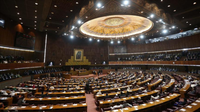 |
|
Principalists (18) Leftists (9) Center (5) Center-Right (4) Independents (72) |
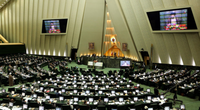 |
|
Government: True Way (501) Opposition Reformist factions (79) |
The legislature of Zorasan, known as the Popular and National Council, is a bicameral body, and is comprised of a 108-member Superior Council (upper house) and a 580-member Popular Council (lower house), the Popular Council is the sovereign national body. Members of the Popular Council are elected through the first-past-the-post system under universal adult suffrage, representing electoral districts known as Popular Constituencies, all members serve for four-year terms. All candidates are vetted by the National Office for Social and Political Affairs (NOSPA), a body comprised of senior figures from the military.
The Superior Council has one-third (36 members) elected from the seven constituent states and two union territories (each providing 4 members), the remaining 72 are appointed by NOSPA. The official role of the Superior Council is to equalise the power and representation of the seven states and ensure that all legislation works for the benefit of all states of the union.
A third body, though not constitutionally recognised as part of the legislature is the National Arbitration Council which is comprised of six jurists and seven military officers (nominally the most senior in the union). The Council interprets the constitution and may veto the Parliament. If a law is deemed incompatible with the constitution or Esafkar (Irfanic law), it is referred back to the Parliament for revision.
Since 2019, the legislature has been dominated by the True Way (holding 501 seats out of 580). The remaining seats are held by a series of informal "factions" (Ferghah), who generally sit in the centre or left of Zorasani politics and advocate pro-democratic reform. Due to the dominance of True Way and the increasing levels of executive control and military influence, the parliament has been regularly criticised as a rubber-stamp institution.
Law
Administrative divisions
The Union comprises seven federal states which are collectively referred to as Union Republics (Ettehād-ye Jamaheer). Each state has its own state constitution, and is largely autonomous in regard to its internal organisation. Further to the seven states is the single Union Territory (Ettehād-ye Azar), in the form of the Zahedan Union Capital Territory, which is the self-governing national capital. The Union is also comprised of two municipalities (bāladiyyeh), the holy cities of Ardakan and Namrin, which hold some autonomy from the federal government. Every administrative division is led by an elected governor (ostāndār), who is appointed by the divion's legislature.
Despite the differences in size and population of the union republics, each is divided in 24 provinces (ostān), there are 168 provinces in the Union. The provinces are divided into counties (šahrestān), and subdivided into districts (baxš) and sub-districts (dehestān).
| Map | Name and flag | Administrative centre | Population | ||
|---|---|---|---|---|---|
 |
Union Republics | ||||
| Saravan | 3,100,068 | ||||
| Khiyara | 1,112,547 | ||||
| Qufeira | 26,362,112 | ||||
| Faidah | 33,776,680 | ||||
| Adh Dhayd | 3,235,400 | ||||
| Javanrud | 94,552,103 | ||||
| At-Turbah | 7,526,197 | ||||
| Karandagh | 3,447,480 | ||||
| Union Territory | |||||
| Zahedan | 18,557,230 | ||||
| Union Municipalities | |||||
| Namrin | 2,102,482 | ||||
| Ardakan | 2,883,687 | ||||
Foreign policy
The official goal of the government of Zorosan is to establish a new world order based on world peace, global collective security, and international equality. Since the time of the Irvadistan War, Zorasan's foreign relations have often been portrayed as being based on four strategic principles; eliminating outside influences in the immediate region, maintaining Zorasan as the leading power of northern Coius, securing Zorasani unification and pursuing extensive diplomatic contacts with developing and non-aligned countries, primarily in wider Coius-Bahia.
Zorasan is a member of the Community of Nations, GIFA, NAC and the ITO.
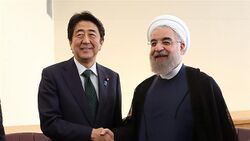
Zorasan's closest relations are with Xiaodong, although the nature of these close relations differ. In regards to Xiaodong, following the Corrective Revolution when XXX met Mahrdad Ali Sattari in 1957 both countries began to foster close political and economic ties as both countries were ruled by one-party governments intent on regional hegemony. Close cooperation between both governments became more prominent under Sun Yuting and Ghassan Ali Ghaddar, and have since Evren Volkan and Yuan Xiannian held office seen a dramatic revival of ties. The government of Xi Yao-tong has furthered this policy, signing significant trade deals with Zorasan in 2016 and 2017, and an increase in military cooperation. Zorasan meanwhile has provided military and technological cooperation with Xiaodong, most prominently during the Third Duljunese-Xiaodongese War. The extremely close and friendly relations between Xiaodong and Zorasan has been called the Rongzhuo-Zahedan Axis.
Armed Forces
The Zorasani Irfanic Revolutionary Army (Arteš-e Enghelâb-e Zorasāni-e Erfāni) consists of the Land Forces, the Navy and the Air Force. The fifth branch exists, which is held by the National Protection Force which exists as a mostly paramilitary force. The Zorasani Irfanic Revolutionary Army currently has around 3,712,000 troops overall (761,000 active, 2,951,000 in reserve, including 367,664 paramilitary soldiers), making it overall the Xth largest in the world
The State President of the Union is the commander-in-chief of the Zorasani Irfanic Revolutionary Army, which answers to the State Council of Ministers via Ministry of National Defence (MoND), which is headed always, by the Chief of Staff of the Zorasani Irfanic Revolutionary Army. Military affairs are primarily handled by the Supreme Revolutionary Military Command, a forum of military commanders who nominally subordinate to the State Council of Ministers. Since the Arduous Revolution, the military has played a significant and domineering role in national politics.
The coast guard and gendarmerie and police forces take on military functions - in the event of war, but are subordinate to the Ministry of State Security. The main intelligence unit, the General Intelligence Directorate (Resat-e Ejmal-e Ettela'at; RESAT), also is officially part of the military structure however they report directly to the government via the Ministry of National Defence. Despite its role as the military intelligence agency, it enjoys a significantly greater role in federal intelligence activities than the State Security Service (Ta'min-e Ejbaree-e Dowlat; TEJDO).

The Zorasani Irfanic Revolutionary Army has gone through numerous periods of modernisation and reform to maintain a dominant position within northern Coius; known as the Union First (Ebteda'Ettehād) policy, allowing it remain relatively as the most disciplined, well armed and capable forces in Coius; this has meant either great efforts being made in domestic R&D or the purchase of quality equipment and systems from foreign producers.
It is widely accepted that Zorasan operates an extensive chemical weapons arsenal, with an estimated combined total of over 14,000 tons of chemical agents in storage.
Conscription - known as "Patriotic and Revolutionary Duty" (Takleef Enghelabee-parast) is currently enforced for all male citizens between the ages of 18-21 for a period of a year to three years, dependent on education and job location. Zorasan does not recognise conscientious objection and does not offer a civilian alternative to military service, many conscientious objectors are either imprisoned under charges of "conspiring against the state" or press-ganged into four year service.
The armed forces are subject to controversial accusations of abuse and harsh treatment of trainee soldiers; with the use of beatings, caning and lashing in punishment of poor behaviour, low enthusiasm and slow progress in improvements. The IRA is also known to train its forces in "Isolated Desert Deployment"; in that units of troops are airdropped into the desert, with limited food and water to develop resilience in the event of being trapped or stranded in hostile environments seen in Coius.
Human rights
Zorasan has been consistently criticised internally and abroad, with human right monitoring organisations such as the International Council for Democracy as of 2017 ranking the Union as unfree. The ICD stated "Zorasan remains a fundamentally flawed parliamentary democracy, with overbearing control by the unaccountable and unelected clergy and military controlled bodies. The mass surveillance and censorship system remains in place and undermines freedom of speech and the press. The excessive use of capital punishment, torture, rape and false imprisonment also remains rampant."
Zorasan's situation is unique in that the systematic abuses of human rights is conducted outside government control and oversight. The ICD has noted that much of the repressive policies and activities are conducted by the military, rather than the federal government. The military's oversized control of state media and the use of the General Intelligence Directorate (RESAT) to pursue activists, civil rights lawyers and critics of the state, led the ICD and the Euclean Community in 2018 to note, "without confrontation of the deep-state within the UZIR, it is unlikely that human rights will improve in the medium to long term."
Economy
Zorasan's economy is a mixture of state ownership of oil and other large enterprises, village agriculture, and small to medium-scale private trading and service ventures. In 2017, GDP was $1.290 trillion ($2.077 trillion trillion at PPP), or $12,002 at PPP per capita. Zorasan is the Xth largest economy in Coius and XXth in the world. Zorasan is ranked as an upper-middle income economy by the Global Institute for Fiscal Affairs. In the early 21st century the service sector contributed the largest percentage of the GDP, followed by industry (mining and manufacturing) and agriculture.
The Central Bank of the Union is responsible for developing and maintaining the Zorasani toman, which serves as the country's currency. The government doesn't recognize trade unions other than those under the Labour Union of Workers and Farmers, which are subject to the approval of employers and the military. The minimum wage as of August 2017 was 2,331 toman a month ($434). Unemployment as of August 2017 was 5.45%, youth unemployment stands at 10.5%, aided by the Bandegee-ye Ashkhas (People's Service) a government run, but charity funded employment scheme that offers young people short-term contracted work.
In 2017, about 45% of the government's budget came from oil and natural gas revenues, and 31% came from taxes and fees. As of 2017 it is estimated, oil and natural gas contributed 30% whilst taxes and fees increased to 45%; as the federal government maintained its policies of diversification of the economy. Since 1980, Zorasan has operated the economic policy known as "Oil to Factory", in that oil revenues would be used as capital to fund industrialisation and diversification, over an extensive welfare state.

The Union's economy has consistently registered growth since 1979, due to its persistent economic reform plan in operation since 1980, which aims to completely diversify the economy from over-reliance on petrochemicals, whilst at the same time greatly expanding the sector's production capacity. As a result, Zorasan maintains a strong biotechnology, nanotechnology, and pharmaceuticals industry, as well as a manufacturing economy leading in the fields of car-manufacture and transportation, construction materials, home appliances, food and agricultural goods, armaments, pharmaceuticals, information technology, power and petrochemicals. Zorasan has a sizeable automotive industry, which produced over a million and a half motor vehicles in 2017, ranking as the fourth largest producer in Coius. Shipyards have 15 floating docks of different sizes and two dry docks. In 2017, there were ten active shipyards in Zorasan, with another 50 being built at the start of 2018. Zorasani shipyards are highly regarded both for the production of chemical and oil tankers up to 10,000 dwt and also for their mega yachts. National brands like Tava and Varan are among the largest producers of consumer electronics and home appliances in Coius and invest a substantial amount of funds for research and development in new technologies related to these fields.
Other key sectors of the national economy are Irfanic banking, construction, home appliances, electronics, textiles, food, mining, iron and steel, and machine industry. As of 2018, the agricultural sector accounted for 11 percent of GDP, while the industrial sector accounted for 25 percent and the services sector for 62 percent. However, agriculture still accounts for a quarter of employment.
Energy
Zorasan has the largest proved gas reserves in the world, with 38.6 trillion cubic metres, and is the largest gas producer. It also ranks first in oil reserves with an estimated 313,600,000,000 barrels. Many consider Zorasan to be the premier energy superpower, unlike other oil producers in Coius and elsewhere, Zorasan does not import fuel products due to high regulation on use and tough laws regarding contraband. Since the 1980s, the UNIR has used the high energy prices to fund exploration of other untapped fields and the modernisation of old production facilities.
The addition of new hydroelectric stations and the streamlining of conventional coal and oil-fired stations increased installed capacity to 33,000 megawatts. Of that amount, about 75% was based on natural gas, 18% on oil, and 7% on hydroelectric power. In 2017, Zorasan announced plans to construct a further eight large solar and wind farms in its desert regions, to decrease its carbon footprint, while two tidal power plants are also to be built. Zorasan also announced plans to construct two major damns on the Khazehabad and Azani Rivers in Pardaran.
Manufacturing
Zorasan has maintained manufacturing as one of the biggest recipients of oil revenues through the process known as "Oil to Factory"; which began under State President Javad Jahandar in 1980. The country's continued use of the Oil to Factory scheme has seen greater investment and returns, due to the high levels of oil and gas production. However, the official position was declared early to be focusing on "high-tech industries", in a move towards an electronic and IT based industrial sector.
Zorasan's major manufactured products are petrochemicals, steel and copper products. Other important manufactures include automobiles, home and electric appliances, telecommunications equipment, cement and industrial machinery. Zorasan operates the largest operational population of industrial robots in northern Coius. Other products include paper, rubber products, processed foods, leather products and pharmaceuticals. In 2017, textile mills, using domestic cotton and wool such as Zahedan Patou and Borazjan Termeh employed around 570,000 people around Borazjan, Zahedan, Qufeira and along the Golden coast. Zorasan remains one of the largest producers of heavy vehicles, including trucks, buses, construction vehicles and locomotives that are sold to Coian markets mostly.
In 2016, the government announced an extension to the Oil to Factory programme, which will see government grants and subsidies focus on the expansion of high quality products including computers, smartphones and other information technology.
Agriculture
As of August 2017, Zorasan is the world's largest producer of hazelnuts, cherries, figs, apricots, quinces and pomegranates; the second largest producer of watermelons, cucumbers and chickpeas; the third largest producer of tomatoes, eggplants, green peppers, lentils and pistachios; the fourth largest producer of onions and olives and the fifth largest producer of sugar beet. The country has been self-sufficient in food production since 1984.
Tourism
Science and technology
Infrastructure
Demographics
According to the Statistical Centre of the Union (Markaz-e Amar-e Ettehād), the country's population was 169.1 million people in 2012, nearly 70% of whom lived in towns and cities. According to the 2018 estimate, the population is increasing by 1.55 percent each year. Zorasan has an average population density of XX people per km². People within the 15–64 age group constitute 67.4 percent of the total population; the 0–14 age group corresponds to 25.3 percent; while senior citizens aged 65 years or older make up 7.3 percent. In 1980, when the first official census was recorded in the Union (following the annexation of Irvadistan), the population was 63.6 million. The largest city in the union, Zahedan, is also Xth largest in population and size in Coius.
| Historical population | ||
|---|---|---|
| Year | Pop. | ±% |
| 1952 | 68,771,235 | — |
| 1962 | 84,987,800 | +23.6% |
| 1972 | 96,319,245 | +13.3% |
| 1982 | 128,511,477 | +33.4% |
| 1992 | 149,912,654 | +16.7% |
| 2002 | 158,023,257 | +5.4% |
| 2012 | 169,114,753 | +7.0% |
| Source: UKP census (1952-1972) UZIR census (1982-2012) | ||
Article 18 of the Union Constitution defines a "Zorasani" as "anyone who is bound to the Zorasani union-state through the bond of citizenship"; therefore, the legal use of the term "Zorasani" as a citizen of the Union is different from the ethnic definition. Zorasan is a multi-ethnic nation, with at least 13 ethnic groups being present, though only 11 being officially recognised. As of the 2012 study, over 89% of citizens consider themselves "Zorasani", while 11% identify themselves by their ethnicity.
Reliable data on the ethnic mix of the population is not available, because federal census figures do not include statistics on ethnicity. Pardarians are the largest ethnic group, with 44-48% of the population identifying as such. Badawiyans are the second largest ethnicity at anywhere from 31-35% per cent of the population, Kexris are also included at 10-12%. Other groups include Oroqics at 4-6%, Adari between 2-3% among others.
The term "minority" itself remains a sensitive issue in Zorasan, while the federal government is frequently criticised for its treatment of minorities. Although minorities are not recognised, state-run Tasnim Broadcasting broadcasts television and radio programs in minority languages. Also, some minority language classes can be chosen in elementary schools.
| Rank | Province | Pop. | Rank | Province | Pop. | ||||
|---|---|---|---|---|---|---|---|---|---|
 Zahedan  Javanrud |
1 | Zahedan | Zahedan-takht | 18,557,230 | 11 | Ardakan | Aqda | 970,611 |  Faidah  Mazdavand |
| 2 | Javanrud | Ejrud | 9,573,217 | 12 | Gamsar | Shahrud | 803,852 | ||
| 3 | Faidah | Qarqur | 4,932,075 | 13 | Shul Abad | Delfan | 776,802 | ||
| 4 | Mazdavand | Daland | 3,403,919 | 14 | Tarim | Hajjah | 543,127 | ||
| 5 | Bandar-e Parvadeh | Bushkan | 3,157,120 | 15 | Oshtorinan | Basht | 541,111 | ||
| 6 | Narmashir | Ganaveh | 2,110,343 | 16 | Pataveh | Ashkezar | 490,536 | ||
| 7 | Khalifan | Zabdah | 2,501,332 | 17 | Qush Teppa | Teppah | 436,002 | ||
| 8 | Borazjan | Ashkezar | 1,855,375 | 18 | Bandar-e-Khamir | Dorestan | 399,110 | ||
| 9 | Qeydar | Tarut | 1,813,997 | 19 | At-Turbah | Khamr | 300,019 | ||
| 10 | Qufeira | Raydah | 1,711,000 | 20 | Namin | Tazeh-Kand | 274,358 | ||
Languages
Religion
Historically, Proto-Pardarian religion and the subsequent Zoroastrianism faith was the dominant religion in the Khazi-Pardaran region, while pre-Irfanic polytheism dominated Irvadistan. This changed after the Irfanic conquest of all three countries. Since the 900s CE, Pardaran and Khazistan have been dominated by the Asha sect of Irfan, while Irvadistan saw the emergence of Hasawi Irfan in the 1100s, this sect represents a significant minority of the state. Other faiths such as Zoroastrianism and Yazdânism exist in smaller communities across the country.
Officially the union is "Irfanic" with both Asha and Hasawi being recognised as the state religions, sectarianism against either sect is severely punished and unconstitutional, but no such status exists for the minority religions.
Today, the Asha remains the majority religion of the population, with 91,702,269 adherents which stands as 81.72% of the population. 17.01% of the population are Hasawi Irfanics, with 19,093,508 adherents. Yazdânism stands at 0.67% with 757,592 adherents, Zoroastrianism follows at 0.41% with 460,055 adherents and Yazidism is the smallest with 0.19% of the population and 213,196 adherents.
Yazdânism, Zoroastrianism and Yazidism are officially recognized by the government. But the Bahá'í Faith, which has several thousand adherents along the border with Siphria, is not officially recognized, and has been persecuted during its existence in both Khazistan and Pardaran since the 19th century, this was extended to the federal government upon its creation.
Healthcare
The Zorasani public health system, the Unified Health System (Beham Behbood Nezam), is managed and provided by all levels of government, being one of the largest system of this type in the world. On the other hand, private healthcare systems play a complementary role.
Public health services are universal and offered to all citizens of the country for free. However, the construction and maintenance of health centers and hospitals are financed by taxes, and the country spends about 9% of its GDP on expenditures in the area. In 2012, Zorasan had 1.85 doctors and 2.3 hospital beds for every 1,000 inhabitants.
Despite all the progress made since the creation of the universal health care system in 1988, there are still several public health problems in Zorasan. In 2006, the main points to be solved were the high infant (2.51%) and maternal mortality rates (73.1 deaths per 1000 births). However, since 2015 significant progress has been made in combating infant mortality, reducing it from 2.51% to 1.98%.
The number of deaths from noncommunicable diseases, such as cardiovascular diseases (151.7 deaths per 100,000 inhabitants) and cancer (72.7 deaths per 100,000 inhabitants), also has a considerable impact on the health of the Nautasian population. Finally, external but preventable factors such as car accidents, violence and suicide caused 10.9% of all deaths in the country.
Education
Responsibility for educational supervision in the union is primarily organised within the individual federal states. The adult literacy rated 94.0% in September 2015, while it had rated 85.0% in 2008, up from 31.5% in 1976.
The requirement to enter into higher education is to have a high school diploma and pass the Federal University Entrance Exam (officially known as konkur (کنکور)). Many students do a 1–2 year course of pre-university (piš-dānešgāh), which is the equivalent of the International Baccalaureate. The completion of the pre-university course earns students the Pre-University Certificate.
Zorasan's higher education is sanctioned by different levels of diplomas, including an associate degree (kārdāni; also known as fowq e diplom) delivered in two years, a bachelor's degree (kāršenāsi; also known as lisāns) delivered in four years, and a master's degree (kāršenāsi e aršad) delivered in two years, after which another exam allows the candidate to pursue a doctoral program (PhD; known as doktorā).
A system of apprenticeship called Dual Learning (Tāšnieh Blāmooz) leads to a skilled qualification which is almost comparable to an academic degree. It allows students in vocational training to learn in a company as well as in a state-run trade school. This has been widely credited for aiding the country's diversification of its economy away from reliance upon petrochemicals, it remains the only Nautasian country to operate the system.
According to some university rankings, the top university in the UNIR is the Rasool Burzafrah Academy, followed by Mahrdad Ali Sattari University and Zahedan Metropolitan University, Mazdavand Technical University and the Central Ekanbat University. However since the 1960s, many military academies have offered their student cadets non-military courses, in the sciences, engineering, mathematics and later IT.
Culture
Art
The art of Zorasan encompasses many disciplines, including architecture, stonemasonry, metalworking, weaving, pottery, painting, and calligraphy. Zorasani works of art show a great variety in style, in different regions and periods. The art of the Zataris remains obscure, but has been theoretically attributed to styles elsewhere in northern Coius. The Sorsanids borrowed heavily from the art of their neighboring civilizations, but produced a synthesis of a unique style, with an eclectic architecture remaining at sites such as Sushar and Pasagarad. By the time of the Gorsanids, Pardarian art came across a general renaissance. Although of unclear development, Gorsanid art was highly influential, and spread into far regions. There are several major surviving monuments to the Gorsanid era.
The Arab peoples of Zorasan saw their art highly influenced by the Arasanid and Gorsanid styles with the expansion of Irfan and its corresponding themes.
Zorasani works also draw inspiration from the southern Coian civilisations during the middle-ages with the adoption of styles from Xiaodong and even Duljunese styles being recorded in some works.
Zorasan's contemporary art traces its origins back to the time of Ardashir Datartabaei, a prominent realist painter at the court of the Farahid dynasty who affected the norms of painting and adopted a naturalistic style that would compete with photographic works.
Music
Music in Zorasan today is a fusion of numerous types and genres produced by the constituent peoples of the country. Despite sharing some similarities, there remains distinct music forms.
Pardaran is the apparent birthplace of some of the earliest complex instruments, dating back to the third millennium BC. The use of both vertical and horizontal angular harps have been documented at the sites Zoarad and Taq-e-Bastah, with the largest collection of Azaran instruments documented at Taq-e-Bastah. Multiple depictions of horizontal harps were also sculpted in Samrinian palaces, dating back between 870 and 640 BC.
From the Arasanid period to the rise of Irfan in 980 AD, there was a long-documented use of cohorts of singing women and children at royal courts and as public means of story-telling and teaching the populace of events. According to Khodrow's Life of Zorasan, these traveling singing groups praised their national heroes and ridiculed their rivals. Likewise, Ashrin's Tales of the Land reports that the Pardarian youth were taught songs about "the deeds both of the gods and of the noblest men".
A notable Arab contribution is the rich maqam heritage which has been passed down orally by the masters of the maqam in an unbroken chain of transmission leading up to the present. The maqam al-Khazi is considered to be the most noble and perfect form of maqam. Al-maqam al-Khazi is the collection of sung poems written either in one of the sixteen meters of classical Arabic or in Arab-Zorasani dialect.
Zorasani traditional musical instruments include string instruments such as chang (harp), qanun, santur, rud (oud, barbat), tar, dotar, setar wind instruments such as sorna (zurna, karna) and ney, and percussion instruments such as tompak, kus, daf (dayere), and naqare.
Zorasani pop music has its origins in the early revolutionary-era.It was significantly developed since the 1950s, using indigenous instruments and forms accompanied by electric guitar and other imported characteristics. The emergence of genres such as rock in the 1960s and hip hop in the 2000s also resulted in major movements and influences in Zorasani music. The emergence of trap in the mid-2000s has seen the genre become of the most popular, producing numerous acclaimed artists.
Literature
Architecture
The history of architecture in Zorasan goes back to the seventh millennium BC, with Pardaran. Zorasanis were among the first to use mathematics, geometry and astronomy in architecture. Zorasani architecture displays great variety, both structural and aesthetic, developing gradually and coherently out of earlier traditions and experience. The guiding motif of Zorasani, and mostly Pardarian architecture is its cosmic symbolism, "by which man is brought into touch and sight with the powers of heaven". This theme has not only given unity and continuity to the architecture of Pardaran, but has been a primary source of its emotional character as well.
Architecture in Zorasan is also dominated by the pre-Irfanic Arabic traditions.
- Museum of Islamic arts SOP.jpg
Museum of Irfanic Art in At-Turbah
The Enqehlab Tower in Zahedan
Sport
With two thirds of the population under the age of 25, many sports are played in Zorasan.
Pardaran is considered to be the most likely birthplace of polo, locally known as Čowgān, with its earliest records attributed to the ancient Zataris. Freestyle wrestling is traditionally considered the national sport of Pardaran and the union at large, and the national wrestlers have been world champions on many occasions. Pardaran's traditional wrestling, called Košti e Pahlevāni ("heroic wrestling"), is also immensely popular with the Arab population.
Being a mountainous country, Zorasan is a venue for skiing, snowboarding, hiking, rock climbing, and mountain climbing. It is home to several ski resorts, the most famous being Tanguz, Dajan, and Shemshar, all within one to three hours traveling from the capital city Zahedan. The resort of Tanguz, located in the Soban mountain rage, is the world's fifth-highest ski resort (3,730 m or 12,238 ft at its highest station), and one of the most exclusive in Coius.
Football has been regarded as the most popular sport in Zorasan, with men's national team having won the Coian Cup on five occasions. The national leagues draw immense numbers of supporters and investment, with the sport being shared by all peoples and constituent states.
Cricket, introduced during the colonial period is also a popular support, especially among the Arab population. The country operates a sizeable national league for cricket teams and is considered the second best cricketing nation in Coius.
Water sports such as boat racing, yachting and water polo are also popular.
Cuisine
Due to its variety of ethnic groups and the influences from the neighboring cultures, the cuisine of Zorasan is diverse. Its cuisine today is dominated by Arab, Turkic and Pardarian influences, these include – vegetables such as aubergine, tomato, okra, onion, potato, courgette, garlic, peppers and chilli, cereals such as rice, bulgur wheat and barley, pulses and legumes such as lentils, chickpeas and cannellini, fruits such as dates, raisins, apricots, figs, grapes, melon, pomegranate and citrus fruits, especially lemon and lime.
Zorasani cuisine includes a wide range of main dishes, including various types of kebab, pilaf, stew (khoresh), soup and āsh, and omelette. Lunch and dinner meals are commonly accompanied by side dishes such as plain yogurt or mast-o-khiar, sabzi, salad Shirazi, and torshi, and might follow dishes such as borani, Mirza Qasemi, or kashk e bademjan as the appetizer.
In Zorasani culture, tea (čāy) is widely consumed. A cup of tea is typically the first thing offered to a guest, this is a tradition shared with the Arab populace. There is also the popular saffron ice cream, known as bastani sonnati ("traditional ice cream"), which is sometimes accompanied with carrot juice. Zorasan is also famous for its caviar.
Media
Zorasan is one of the countries with the worst freedom of the press situation, with consistent breaches of independence and interference by the state. The Ministry of Culture and Irfanic Guidance is Zorasan's main government department responsible for the cultural policy, including activities regarding communications and information. However, the National Administration for Media and Broadcasting Affairs, operated by the military is charged with overseeing all forms dispensation of information and is charged with censorship. Though, it is noted that some newspapers are permitted full independence as avenues for criticism and opposition.
Zorasan's first newspapers were published during the mid-19th century under colonial authorities, the oldest newspaper, Eftekar began as the Daily Recorder, in the Estmerish controlled port of Mazdavand. Most of the newspapers published in Zorasan are in Pardarian or Arabic, the country's official languages. The country's most widely circulated periodicals are based in Zahedan, among which are Eftekar, Ettehād, Qufeira Muyāwam and Watan. The Zahedan Telegraph, Zorasan Today, and Union Observer are the leading internationally marketed newspapers in Zorasan.
Television was introduced in Zorasan in 1955. Television would expand dramatically following the Irvadistan War and establishment of the current Union of Zorasani Irfanic Republics in 1979. Since 1979, Zorasan's largest media corporation is the Union Broadcasting and Communication Agency (UBCA). Despite the restrictions on non-domestic television, about 75% of the residents of the capital city and about 50 to 60% of the residents outside the capital city access worldwide television channels through satellite dishes, although observers state that the figures are likely to be higher.





